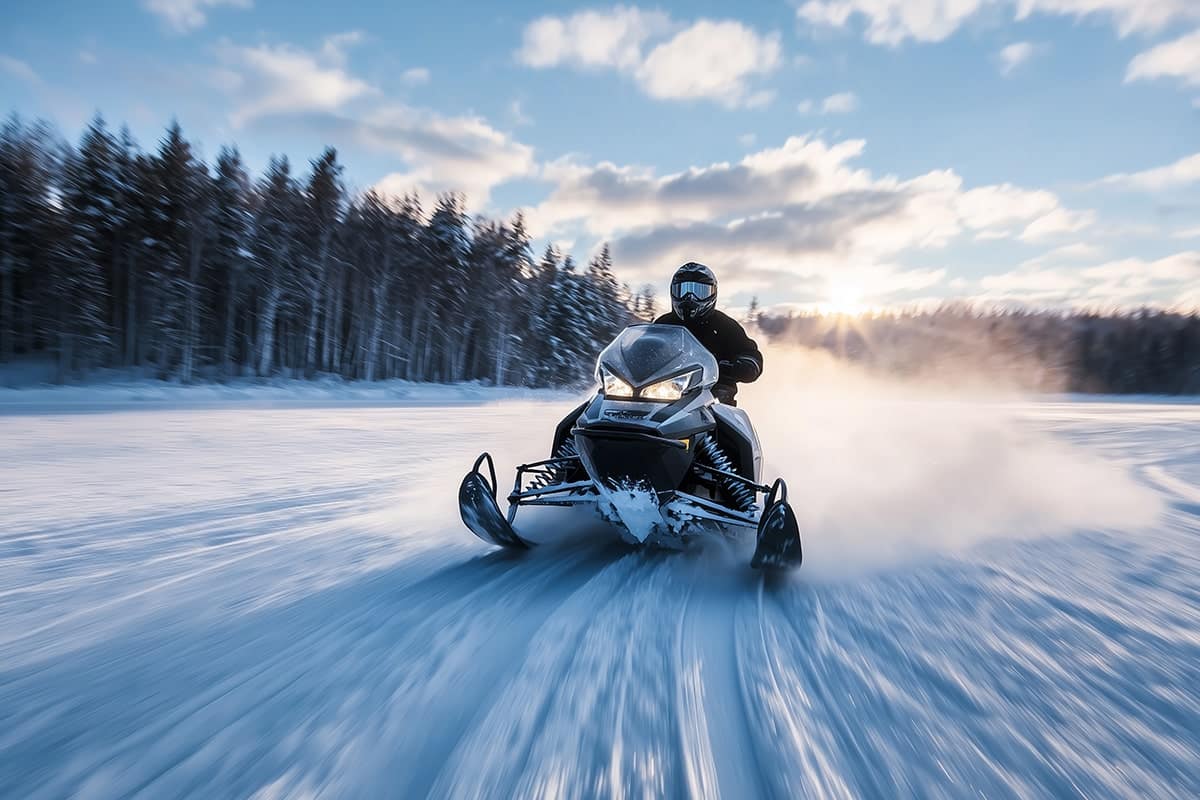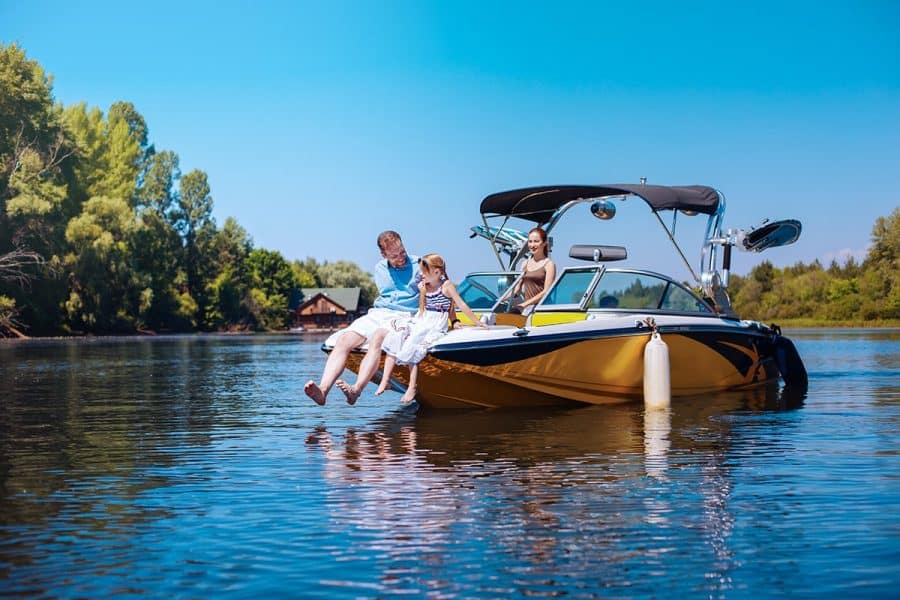1️⃣ Wear Proper Gear:
Helmet: A DOT approved snowmobiling helmet with a face shield or goggles.
Goggles: Anti-fog and UV-protected lenses for clear Visibility.
Gloves: Insulated, waterproof, and windproof gloves and good grip.
Snow Suit: One-piece or two- piece insulated and waterproof suit.
Base Layers: Moisture-wicking thermal layers to keep warm and dry.
Socks: Wool or thermal socks for warmth and comfort.
Boots: Waterproof, insulated boots with good ankle support and non-slip soles.
2️⃣ Check the Weather:
Check Reliable platforms: Like the weather Network, AccuWeather, or your local weather network.
- Current Temperature
- Wind Speeds
- Snowfall Forecast
- Visibility Conditions
Look or Local Trail Conditions: Many Snowmobiling clubs or trails associations provide real-time updates on trails conditions and weather in your area.
Monitor For Storm Warnings: Pay attention to alerts for blizzards, strong winds, or sudden temperatures drops.
Use GPS and Satellite Weather Services: Tools like Garmin or other GPS Devices often have integrated weather forecasts.
Observe the Sky: If you’re already outdoors, watch for signs of changing weather, such as darkening clouds or increasing winds
Plan for the cold: Consider wind Chill and dress in layers to prepare for lower-than-expected temperatures
3️⃣ Inspect Your Snowmobile:
Check Fuel and Oil: Ensure you have a full tank of gas and the proper oil level for smooth operation.
Test Brakes: Squeeze the brake lever to ensure it feels firm and responsive.
Inspect the Lights: Check that headlights, taillights, and brake lights are functioning properly for visibility.
Examine the Track and Suspension: Look for signs of wear or damage on the track and test the suspension to ensure smooth riding.
Verify the Belt Condition: Inspect the drive belt for cracks, fraying or excessive wear, and ensure its tight.
Check the Steering: Turn the handlebars to confirm the skis move freely and there’s no stiffness.
Test The Throttle: Press the throttle to make sure it snaps back into place and operates smoothly.
Inspect the Skis and Carbides: Ensure the skis are secure and check the carbide runner for wear to maintain control on icy surfaces.
Ensure Proper Coolant Levels: Check that the coolant level is sufficient to prevent overheating.
Carry Spare Parts: Bring a spare belt, spark plugs and the basic tools in case of an unexpected repairs.
4️⃣ Stay on Marked Trails:
Safety First: Marked trails are maintained and inspected for hazards like thin ice, steep drop-offs, or obstacles.
Avoid Getting Lost: Trails are mapped and often have signs or makers to guide you, reducing the risk of disorientation.
Preserve the Environment: Riding off-trail can damage sensitive ecosystems, harm wildlife, and disrupt vegetation.
Legal Compliance: Many regions require snowmobilers to stay on designated trails to avoid trespassing on private property.
Trail Conditions: Groomed trails offer smoother rides and better control, reducing wear on your snowmobile and strain on your body.
Emergency Access: Staying on trails makes it easier for rescuers to find you if needed.
5️⃣ Buddy System:
Immediate Help in Emergencies: If you have an accident, get stuck, or experience a breakdown, a buddy can assist you or call for help
Navigation Support: Riding with a partner reduces the risk of getting lost, as two sets of eyes are better for spotting trail markers or hazards.
Safety in Numbers: Wildlife encounters or risky situations are less intimidating with a companion.
Shared Supplies: In case of an emergency, you can share resources like tools, water, or a first-aid kit.
Encourages Responsible Riding: Having a buddy helps keep speed and risky behavior in check since someone is watching out for you.
Easier Rescue: In remote areas, a buddy can guide rescuers to your location or help transport you if needed.
6️⃣ Carry Emergency Supplies:
First Aid Kit: compact and specific for winter conditions.
Avalanche Beacon: For rescue in emergencies.
Multi-Tool or Knife: For repairs or emergencies
Emergency Blanket: Light weight and essential for extreme cold.
GPS/Map: For navigation, especially in remote areas.
Two-way Radio or Satellite Phone: For communication in no-cell areas.
Backpack or Storage Bag: To carry gear and essentials.
Face Mask/Balaclava: For added wind protection.
Hand Warmers: Disposable or rechargeable to keep hands and foot warm.
Water, Snacks and Flashlight
7️⃣ Know Your Limits:
Prevent Accidents: Riding beyond your skill level increases the risk of losing control, especially on challenging terrain or at high speeds.
Avoid Physical Exhaustion: Snowmobiling can be physically demanding. Overestimating your stamina could lead to fatigue, impairing your ability to operate the snowmobile safely.
Protect Your Snowmobile: Attempting steep climbs, deep powder, or rough trails beyond your experience could damage your snowmobile.
Manage Weather and Terrain Challenges: Harsh conditions like deep snow, ice, or steep inclines require experience. Staying within your comfort zone helps you navigate safely.
Reduce Stress and Enjoy the Ride: Pushing yourself too hard can lead to frustration or anxiety, diminishing the fun. Staying within your abilities ensures a smoother experience.
Safer for Your Group: If you’re part of a group, riding within your limits ensures you don’t put others at risk trying to help you in difficult situations.
🌨️ Pro Tip:
If you’re snowmobiling in remote areas, let someone know your route and estimated return time!
Stay safe, have fun, and enjoy the winter wonderland! 🛷❄️




